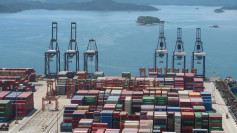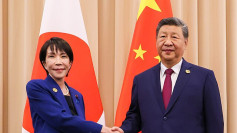China has approved a sweeping $1.4 trillion stimulus package to help local governments manage their mounting hidden debt and revitalize the country's sluggish economy. Finance Minister Lan Fo'an announced on Friday that the initiative would allocate 10 trillion yuan over five years to ease fiscal pressures on regional administrations and prevent a potentially destabilizing debt crisis.
The plan, set to be rolled out over three years, allows for up to 6 trillion yuan ($840 billion) to be used for replacing "hidden debt," which generally refers to off-the-books borrowing undertaken by local government financing vehicles. "Since the beginning of this year, affected by a variety of factors, the central and local (government) fiscal revenues have fallen short of expectations," Lan stated during a press conference. This refinancing effort is intended to reduce interest burdens and free up fiscal resources.
In addition to the initial tranche, Lan outlined another 4 trillion yuan ($558 billion) in special local bonds over a five-year span to further reduce debt. These announcements were made during the conclusion of a five-day meeting of China's Standing Committee of the National People's Congress (NPC), indicating Beijing's commitment to restructuring public debt while fueling economic growth.
The scope of China's economic slowdown has raised alarms across government corridors. Years of strict COVID-19 restrictions, coupled with a real estate market slump, have left local governments with significant financial shortfalls. In some regions, the fiscal strain has reportedly become so severe that municipalities struggle to provide essential public services. Lan disclosed that China's hidden debt balance stood at 14.3 trillion yuan ($1.99 trillion) as of the end of 2023, with a target to slash it to 2.3 trillion yuan ($320 billion) by 2028.
Despite the headline-grabbing scale of the program, some analysts remain skeptical about its potential impact. Mark Williams, chief Asia economist at Capital Economics, remarked, "Today's fiscal announcement is another disappointment for those expecting substantial stimulus," noting that the total package, spread over five years, accounts for a mere 0.5% of GDP.
The hidden debt crisis has long been a pressing issue for Chinese policymakers, exacerbated by diminishing revenues from land sales-a traditional pillar of local government financing-and expenditures related to pandemic containment measures. To stabilize the economic outlook, Beijing has rolled out a series of fiscal and monetary measures, including recent interest rate cuts by the People's Bank of China and a boost in the country's special bond ceiling.
The initiative comes amid heightened political tensions and economic challenges for China. Analysts believe Beijing accelerated these measures following Donald Trump's re-election in the United States, given his history of imposing harsh tariffs on Chinese goods and the potential for renewed trade frictions. While the stimulus package is aimed at reducing economic volatility, it may not be sufficient to achieve more aggressive growth targets without broader consumer-oriented measures.
The real estate downturn, a key contributor to local fiscal strains, continues to be a major concern. Property sales have slumped, diminishing an essential revenue stream. In September, President Xi Jinping convened a meeting emphasizing "fiscal and monetary support," with a particular focus on addressing real estate challenges. The Standing Committee's recent approval of the debt package is seen as a concrete step in that direction.
Not all economists view the package as limited in scope. Larry Hu, chief China economist at Macquarie Bank, suggested that expectations of a massive fiscal boost were unrealistic. "The policy goal is to achieve the GDP growth target and reduce tail risks, not to reflate the economy in any meaningful way," Hu said.
Efforts to stimulate growth have yielded mixed results thus far. China's GDP rose 4.6% year-over-year during the July-September quarter, slightly exceeding expectations. However, fears persist that the current pace of expansion may fall short of the government's annual 5% growth target. The approval of the stimulus package reflects Beijing's balancing act of managing long-term structural issues with short-term economic stagnation.
Nomura estimates that hidden debt may range from 50 trillion to 60 trillion yuan ($7 trillion to $8.4 trillion), suggesting that Beijing's interventions, though significant, may be just the beginning of broader fiscal efforts needed to stabilize the world's second-largest economy. For now, China's leadership appears determined to tread a cautious path, emphasizing stability while navigating an uncertain global economic landscape.






